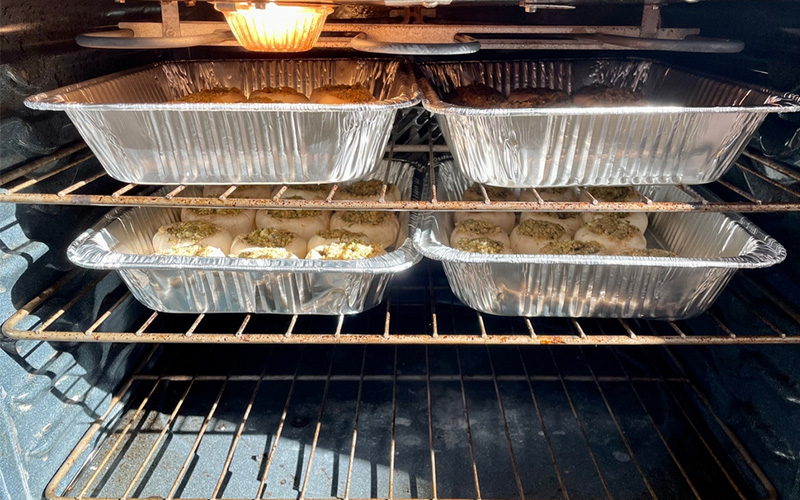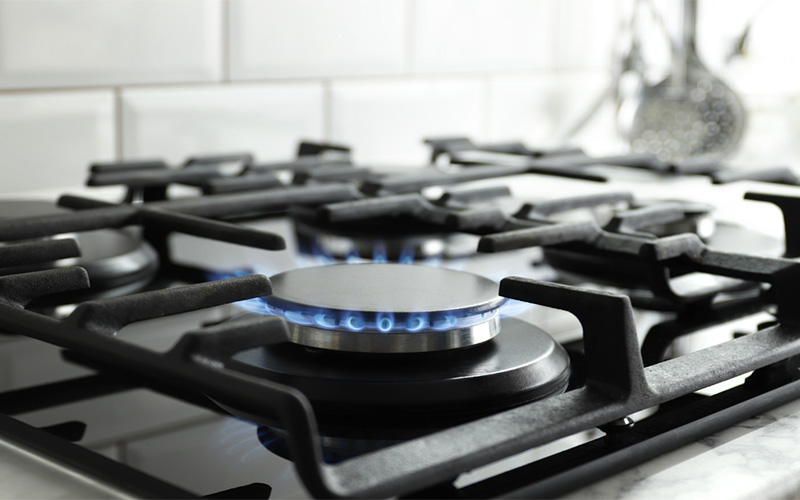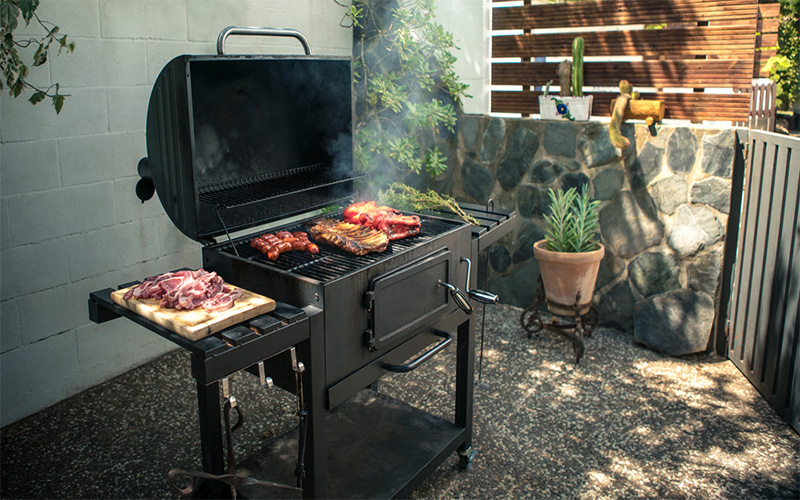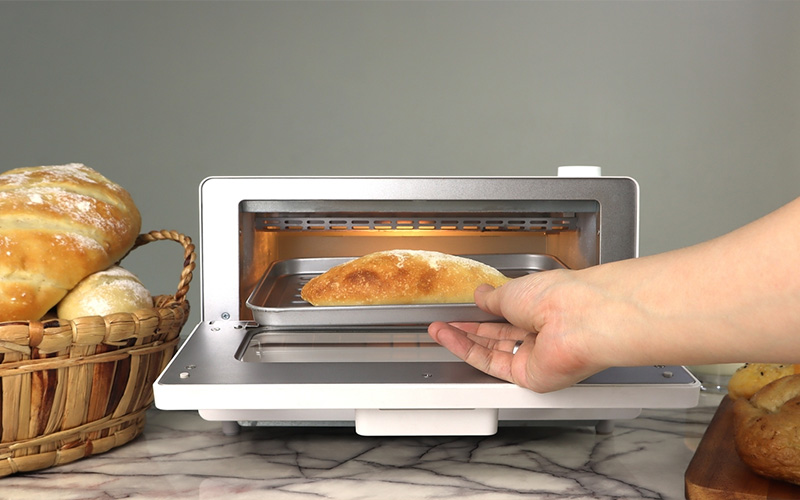Explore Alternative Methods: Heating Food In Aluminium Trays Without An Oven
Sep 27th 2023
In today's fast-paced world, the importance of heating food uniformly cannot be overstated. A warm, well-cooked meal nourishes both the body and soul. However, when an oven isn't within arm's reach, the versatile aluminum tray comes into play, offering multiple alternatives to ensure your meal is heated to perfection.
Understanding Aluminium: A Brief Overview
Aluminium, an excellent conductor of heat, stands out as a pivotal material in cookware. Its properties make it an ideal companion for cooking, enabling uniform heat distribution. Yet, many are clouded by safety concerns, often based on half-truths.
Why Opt For Non-Oven Heating Methods?
Sometimes, life places us in scenarios sans an oven – be it during travel, a power outage, or simply residing in a space-starved apartment. Moreover, turning towards non-oven methods can significantly reduce energy consumption, benefitting both your pocket and the planet.
Microwave: Not Just For Ready Meals

Most homes and even some restaurants sport microwaves, a testament to their utility. But, using aluminium trays in microwaves requires adherence to specific steps to avoid sparks or damage. You can effectively use aluminum in a microwave by ensuring the foil doesn't touch the microwave walls and maintaining a safe distance from its sides. However, always proceed cautiously and stick to microwave-safe containers when in doubt.
How Do You Heat Up Food In The Aluminium Tray Without An Oven?
Aluminium trays, thanks to their superb conductivity and adaptibility , have emerged as reliable allies in the kitchen. For those moments when you're oven-less, wondering, "How to heat up food in an aluminium tray without an oven?" fret not. Several foolproof methods at your disposal ensure your leftovers are reheated to perfection.

- Stovetop Brilliance: You can reheat your meal in mere minutes by placing the aluminum tray on a burner and setting it to a low flame. Just keep stirring occasionally to avoid uneven heating or potential burning.
- Microwave Mastery: Contrary to popular belief, aluminium trays can be safely used in a microwave if precautions are taken. Set the timer for intervals of 30 seconds, checking the food periodically. This method ensures your leftovers regain their fresh-cooked aroma and taste without being overcooked.
Reinventing how we use our kitchen tools, especially in the absence of conventional equipment like ovens, can be both a fun challenge and a testament to our adaptability. With aluminum trays in your culinary arsenal, your meals will always find their way back to warmth.
Stovetop Magic: Using A Skillet Or Pan

The trusty stove comes to the rescue for those nostalgic about traditional cookware. One can heat food indirectly by placing an aluminium tray on a pot or skillet. Remember to keep the flame low, ensuring even heating and eliminating the risk of overheating.
Grill it Up: Embracing The Outdoors

Nothing beats the aroma of food sizzling on a grill. Preheat your grill, position your aluminium tray away from direct flames, and monitor the cooking process. Using aluminium retains moisture in the meal, preventing any unwanted dryness or taste alterations.
Steam Heating: A Gentle Approach

A method that retains both the warmth and nutrition of your meal, steam heating is especially apt for certain delicate dishes. Creating a makeshift steamer with pots and steam table aluminium trays isn't as daunting as it sounds, and the results are often worth the effort.
Slow Cooker: Patience Pays Off

The slow cooker, often termed a culinary gem, can accommodate aluminium trays. However, dishes rich in moisture, like stews or braised pork, are better suited for this method, ensuring the taste remains impeccable.
Using the Toaster Oven: A Compact Solution

Smaller than conventional ovens but equally competent, aluminum foil toaster ovens can heat aluminium containers efficiently. By tweaking settings and being mindful of temperatures, you can enjoy a hot meal without the bulk of a full-sized oven.
Hot Water Bath: The Science of Double Boiling
Double boiling, or using a hot water bath, ranks high for reheating certain foods. Not only does it retain the original taste, but it also prevents contamination from direct fire.
Advantages of Non-Oven Methods
Alternative heating methods offer energy conservation benefits while catering to various dish types. For instance, steam heating preserves food's nutrients, while grilling imparts a distinct flavor, elevating the meal's quality.
Common Mistakes to Avoid
Overheating can dry out your meal, while underheating poses health risks. It's imperative to strike a balance and be mindful of potential pitfalls, like using damaged aluminium foil containers or overlooking microwave instructions.
Aluminium Trays and Environmental Concerns
While aluminium trays are undeniably convenient, it's our responsibility to minimize waste. Recycling and reusing can drastically cut down the environmental footprint of aluminium production.
Heating Frozen Foods vs. Fresh Foods
Frozen foods require a longer heating time compared to their fresh counterparts. Safety remains paramount regardless of the food state, emphasizing the need to heat meals to the recommended temperature.
Pairing Heating Methods with Food Types
A meticulous match of the food type with a heating method can drastically elevate your culinary experience. While some meals bask in slow cooking's gradual warmth, others demand the rapid heat of a microwave.
Innovative Multi-method Techniques
For those willing to experiment, combining methods can yield gourmet results. Imagine using steam and then grilling for that perfect texture. However, mixed techniques demand a deep understanding of each method to ensure safety and taste.
Cleaning and Maintaining Aluminium Trays
The longevity of aluminium trays hinges on proper maintenance. Regular cleaning, devoid of abrasive materials, can prolong their lifespan. Yet, dents or holes are clear indicators that it's time for a replacement.
User Experiences: Tales from the Kitchen
Many novice and seasoned chefs have dabbled with alternative heating methods. Their tales combine insights – from initial hesitations through challenges to eventual culinary triumphs.
Conclusion
Kitchen versatility isn't about the abundance of gadgets but about adaptability. Embracing diverse heating methods augments our culinary repertoire and champions sustainability. Here's to hot, delicious meals, no matter the heating method!
Frequently Asked Questions
Do Aluminium Trays React With Acidic Foods?
Aluminium can react with highly acidic or basic foods, potentially altering the flavor and color of the dish.
Are There Foods I Shouldn't Heat In Aluminium Trays?
It's best to avoid reheating acidic foods, like tomato sauce, directly in aluminium trays to prevent reactions.
How Do I Dispose Of Used Aluminium Trays?
Recycle them if your local facilities accept aluminium; otherwise, dispose of them in the regular trash.
Can Aluminium Trays Be Reused?
Yes, they can be reused if they're cleaned well and show no signs of damage.


